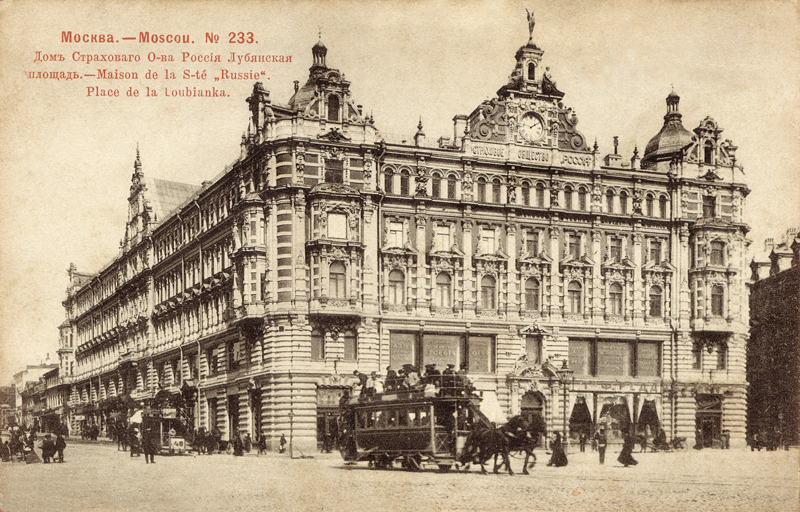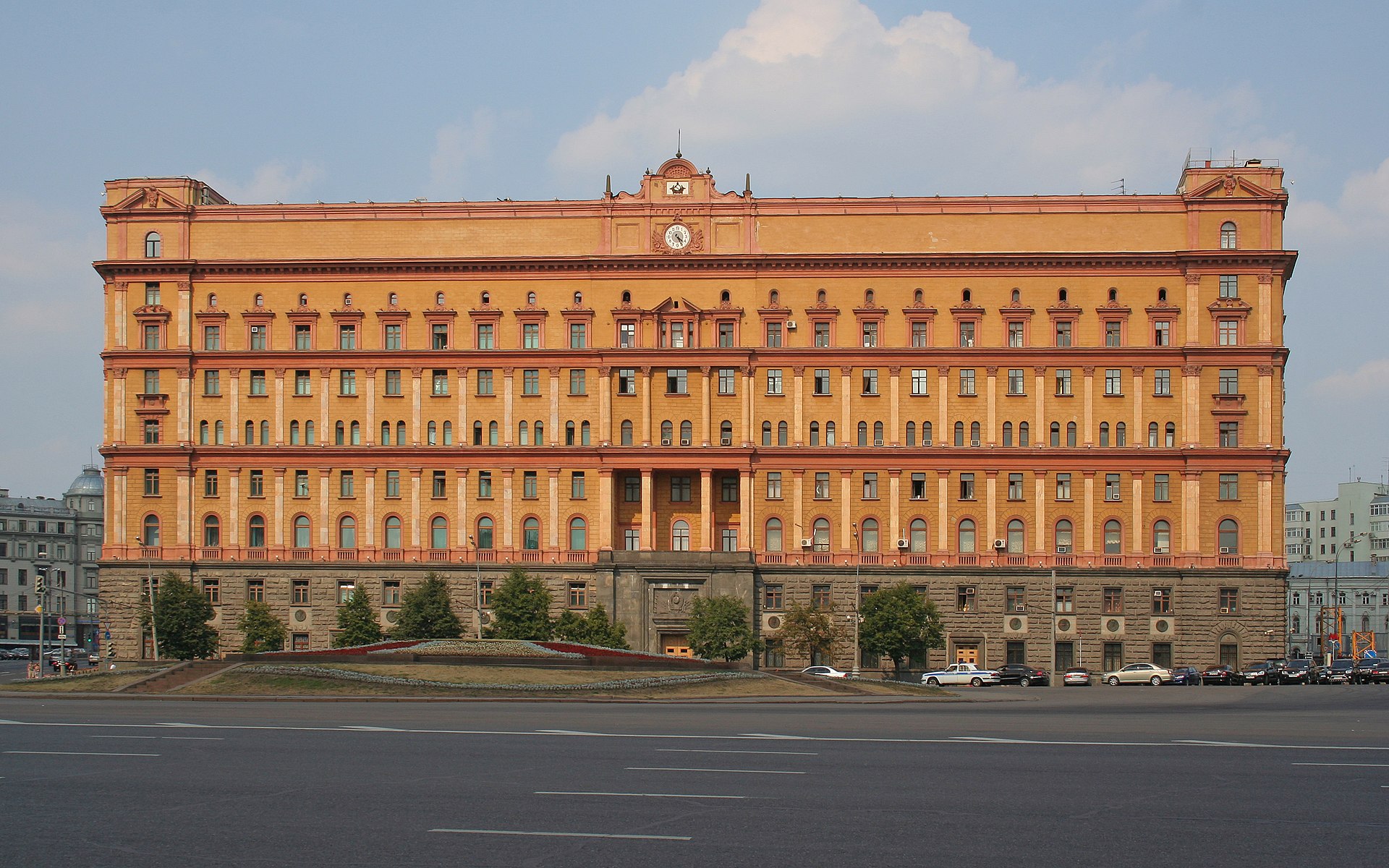
秦置此官,仅次于丞相的中央最高长官,主要职务为监察、执法,兼管重要文书图籍。西汉时丞相缺位,往往以御史大夫递补,并与丞相、太尉合称三公。汉成帝时改为大司空。曹魏黄初元年,改御史大夫为司空。隋唐以后,御史大夫之职与秦汉有所不同,仅为御史台长官,专掌监察、执法。五代十国时期杨吴政权为避讳奠基人杨行密父杨怤,改称御史大宪。明朝洪武年间改御史台为都察院。御史大夫遂废。
本站虽取御史大夫之名,实只取「御史」二字而已,乃彰本站建立目的为个人历史与英文学习笔记。与御史监察之本意相去甚远,然仍不失以此为乐。纸上得来终觉浅,绝知此事要躬行。期为学日益精进、深自砥砺,特此记录。
The Lubyanka was originally built in 1898 as the headquarters of the All-Russia Insurance Company, on the spot where Catherine the Great had once headquartered her secret police. The building was designed by the architect Alexander V. Ivanov. It is noted for its parquet floors and pale green walls. Belying its massiveness, the edifice avoids an impression of heroic scale: isolated Palladian and Baroque details, such as the minute pediments over the corner bays and the central loggia, are lost in an endlessly repeating palace facade where three bands of cornices emphasize the horizontal lines. A clock is centered in the uppermost band of the facade.
A fountain used to stand in front of the building, at the center of the Lubyanka Square.
Following the Bolshevik Revolution, in 1918 the structure was taken over by the government, for use as the headquarters of the secret police, then called the Cheka. The prison became operational in 1920. Its prisoners included Boris Savinkov, Osip Mandelstam, and Aleksandr Solzhenitsyn. In Soviet Russian jokes, it was referred to as "the tallest building in Moscow", since Siberia (a euphemism for the Gulag labour camp system) could be seen from its basement. The prison is on the top floor, but since there are no windows on that floor, most prisoners, and therefore popular conception, thought they were being detained in its basement.

During the Great Purge, the offices became increasingly cramped due to staff numbers. In 1940, Aleksey Shchusev was commissioned to enlarge the building. By 1947, his new design had doubled Lubyanka's size horizontally, with the original structure taking up the left half of the facade (as viewed from the street). He added another storey and extended the structure by incorporating backstreet buildings. Shchusev's design accentuated Neo-Renaissance detailing, but only the right part of the facade was constructed under his direction in the 1940s, due to the war and other hindrances.
Raoul Wallenberg was detained in the Lubyanka prison, where he reportedly died in 1947. According to the KGB, prisoners' interrogations stopped at Lubyanka in 1953 after the death of Stalin.
In 1957, Russia's largest toy shop opened on the opposite side of the Lubyanka Square, where a medieval cannon foundry was previously located. In 1958, the fountain at the center of the Lubyanka Square was replaced by an 11-ton (or 14-ton, or 15-ton) statue of Felix Dzerzhinsky, founder of the Cheka.
In 1972, Vasili Mitrokhin moved 300,000 KGB files from the Lubyanka building that he gave to the British intelligence in 1992.
The building's asymmetric facade survived intact until 1983, when the original structure was reconstructed to match the new build, at the urging of Communist Party General Secretary and former KGB Director Yuri Andropov in accordance with Shchusev's plans.

Although the Soviet secret police changed its name many times, its headquarters remained in this building. Secret police chiefs from Lavrenty Beria to Andropov used the same office on the third floor, which looked down on the statue of Cheka founder Felix Dzerzhinsky. A prison on the ground floor of the building figures prominently in a book written by the author Aleksandr Solzhenitsyn, The Gulag Archipelago. Famous inmates held, tortured and interrogated there include Sidney Reilly, Greville Wynne, Raoul Wallenberg, Ion Antonescu, Osip Mandelstam, Genrikh Yagoda, János Esterházy, Alexander Dolgun, Rochus Misch, and Walter Ciszek.
During the 1980s, the prison was turned into a cafeteria for the KGB staff.
After the dissolution of the KGB in 1991, Lubyanka became the headquarters of the Border Guard Service of Russia, houses the Lubyanka prison, and is one directorate of the FSB. In addition, a museum of the KGB was opened to the public.